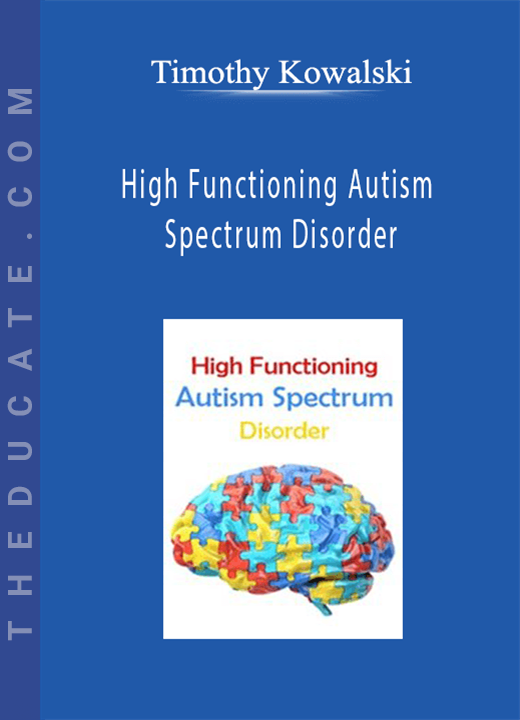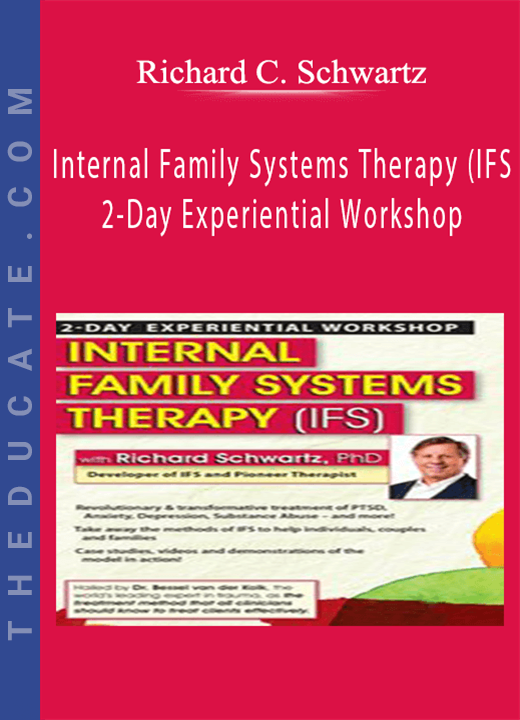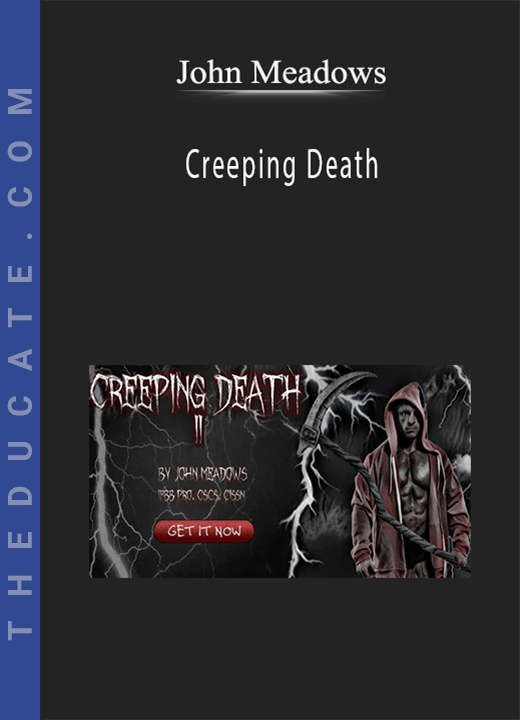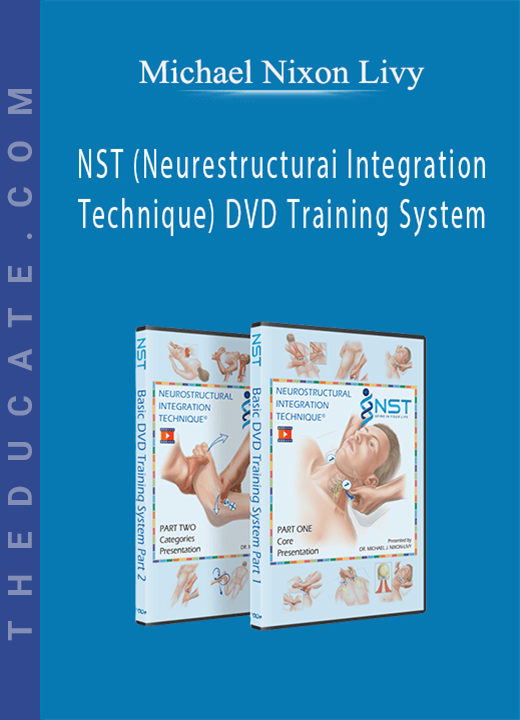Description
Timothy Kowalski – High Functioning Autism Spectrum Disorder
A Person-Centered Approach to High Functioning Autism Spectrum Disorder
The higher functioning (previously known as Asperger’s Disorder) population of Autism Spectrum Disorders has recently received a great deal of attention. DSM-5® no longer diagnoses individuals as Asperger’s Disorder or PDD-NOS; they are included in the broader Autism Spectrum Disorder (ASD) label. This presents significant changes to the way professionals diagnose and treat this population.
Mr. Kowalski will teach you how to apply a person-centered approach to treating individuals on the higher end of the Autism Spectrum Disorder. You will encounter the typical deficits seen in the domain of social-interaction and obtain intervention techniques to address tact, proxemics, social rules, egocentricity, naiveté, and jocularity. Obsessive interests, poor play skills, dislike of physical contact, and gullibility that are often associated with Autism Spectrum Disorder will be addressed. Expand your ability to treat social-communication deficits such as abuse of conversational rules, prosody, perseverative questioning, abstract reasoning, pedantic speech, and nonverbal communication skills. Enhance clients’ emotional regulation with specific techniques designed to improve stress, anxiety, self-esteem, change, ritualism, and sensory overload, and how to recognize emotional states in themselves and others.
In addition, this recording offers extensive strategies to enhance the academic needs of the ASD client by focusing on seven core academic issues: initiating work assignments, increasing motivation, decreasing distraction, compensating for gross and fine motor deficits, adapting the curriculum, academic modifications, and increasing cognitive processing. End the recording feeling empowered and ready to employ these techniques, resulting in improved outcomes and functional daily living.
- Determine how to develop social awareness in clients for the purposes of client psychoeducation
- Ascertain how mirror neurons impact social awareness, and describe how this impacts the clinician’s choice of treatment strategy
- Discuss the social triad of interaction, communication, and emotional regulation, with clinical intervention techniques to address deficits in these areas
- Detect fine motor difficulties and how to address them in clients
- Recognize when sensory difficulties are present and determine how to address them in clients
- Examine gross motor difficulties and how to address them in clients
- Ascertain how to address problem academic behaviors with clinical interventions to reduce instances of talking off-task, daydreaming, ignoring new information, reading comprehension, tendency to focus on unimportant information, organization, self-monitoring skills, time management, procrastination, problem-solving, literalism, and perfectionism
GET HIGH FUNCTIONING AUTISM SPECTRUM DISORDER OF AUTHOR TIMOTHY KOWALSKI
DIAGNOSTIC CRITERIA
- Comparison of three major classification systems
- DSM-5® compared to DSM IV-TR®
- ICD-10
- Gillberg’s Criteria
EPIDEMIOLOGY
DIAGNOSIS
RATING SCALES
- Tools for higher functioning individuals
- Tools for pragmatic language assessment
MISDIAGNOSIS IS COMMON
- Comparison of common clinical misdiagnoses
THEORIES AS TO WHY THEY ACT THE WAY THEY DO
- Executive function
- Central coherence
- Emotional intelligence
- Anxiety
SOCIAL INTERACTIVE DOMAIN
- Identify behavioral issues related to social interaction
- Intervention strategies designed to address areas of social interaction
SOCIAL COMMUNICATIVE DOMAIN
- Identify issues related to social communication
- Intervention strategies designed to address areas of social communication
SOCIAL-EMOTIONAL DOMAIN
- Identify behavioral issues related to social emotional regulation
- Intervention strategies designed to address areas of social emotional regulation
ACADEMIC ISSUES
- Identify organizational difficulties
- Identify issues impacting academic success
- Intervention strategies
- To assist in initiating work assignments
- To increase motivation
- To increase attention
- For curriculum adaptation
- For academic modification
- For improving reading comprehension
- To improve cognitive processing
GROSS MOTOR ISSUES
- Identify issues and interventions for improving gross motor skills
FINE MOTOR ISSUES
- Identifying four fine motor issues
- Intervention strategies for improving fine motor skills
PROGNOSIS
HANDS-ON LEARNING: PRACTICAL, SKILLS-BASED ACTIVITIES
- Case study diagnosis
- Developing treatment goals
INSTANT DOWNLOAD








12 reviews for Timothy Kowalski – High Functioning Autism Spectrum Disorder
There are no reviews yet.